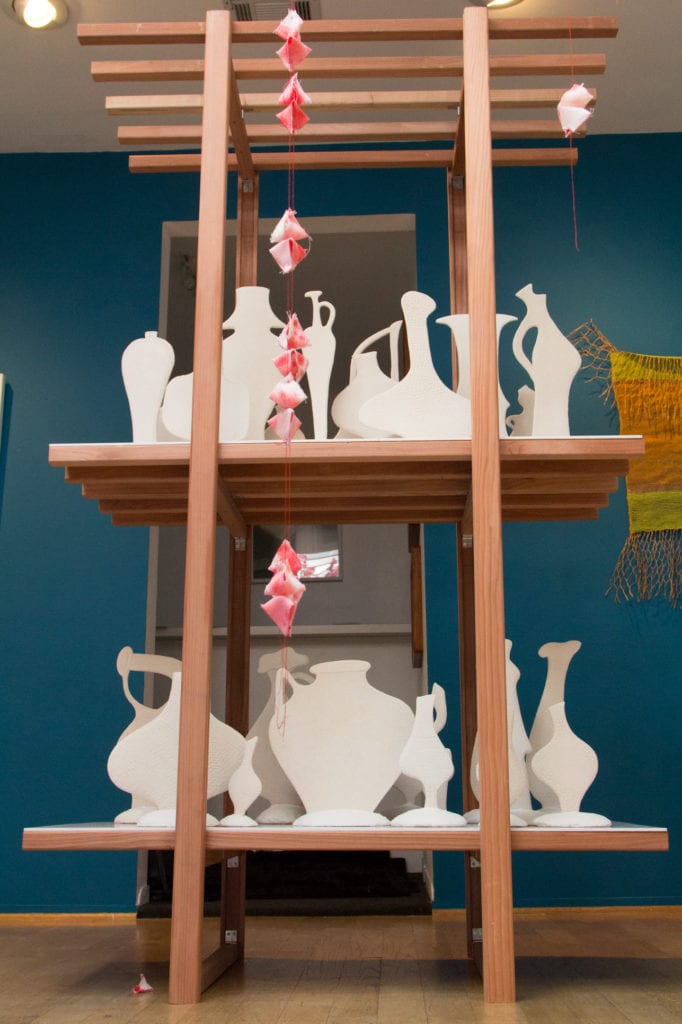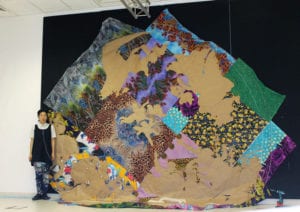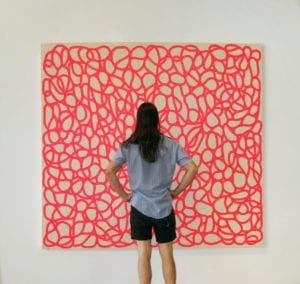We met Kim Truong as one of over twenty artists in Without Design or Sketch: The Story of a Room. Organized by Rough Play, the exhibition was Launch LA Gallery’s first group show of that scale in its intimate gallery space. As the first of a three-part series interviewing artists from the show, we invited Kim to talk about her piece in the show, her practice, and the link between her art and transnationality.
Art Zealous: Tell us about how you came to be involved in this exhibition.
Kim Truong: I was asked by the curators to participate in the show. They sent me a draft of the exhibition concept, including a few questions for me to think about: “What is the artist’s responsibility to moral and/or social issues? Where is the boundary between art space and living space? How does beauty fit into contemporary art? What is the role of the decorative in art and how do we distinguish it from other categories of aesthetic and formal concerns?”
AZ: I understand that you were asked to respond to Whistler’s Peacock Room, as a way to address issues such as collecting [art], patronage, and the boundaries between “decorative” and “fine” arts. What are you responding to with your piece, “Departed”?
KT: The history of the “Blue and White” ceramics has been an interest of mine for some time now. All the forms in “Departed III” are inspired by vessels from around the world, as if they are re-interpretations of those shapes. They are sculptures of vessels. I think of them as drawings or sketches in space. They resemble “ghosts” of vessels, and your perception and understanding of them changes as you move around them.
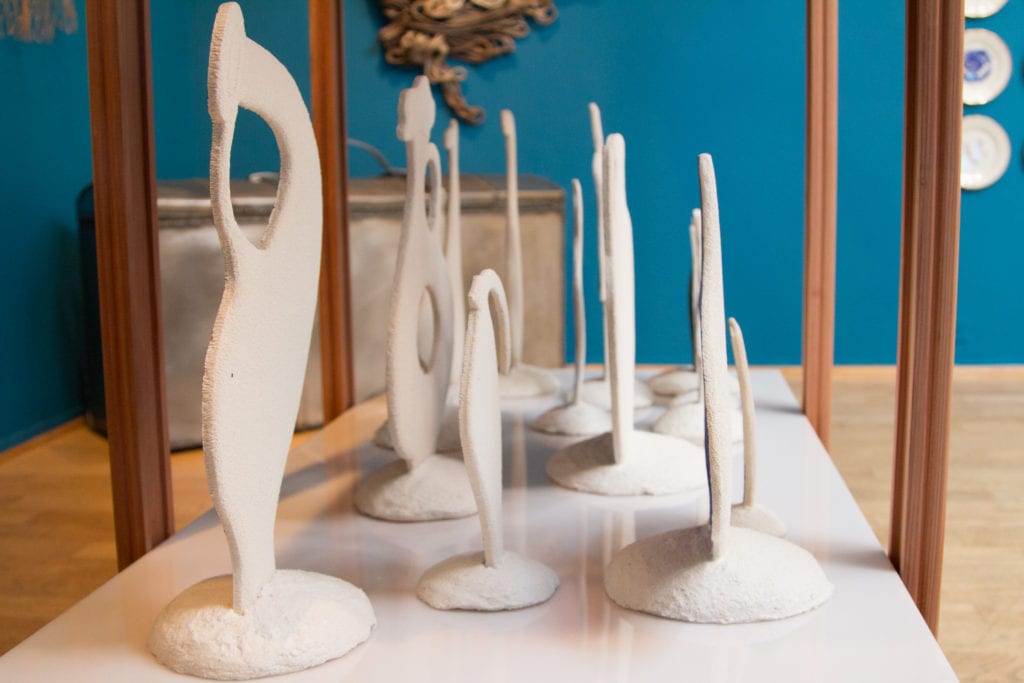
AZ: What is it about ceramics and different types of vessels that compel you?
KT: I am interested in ceramics because of its rich history, especially the many issues surrounding access to resources. Ceramics is such an integral part of human culture – our cultures are universally connected by food, vessels (to hold that food), sanitation, and shelter.
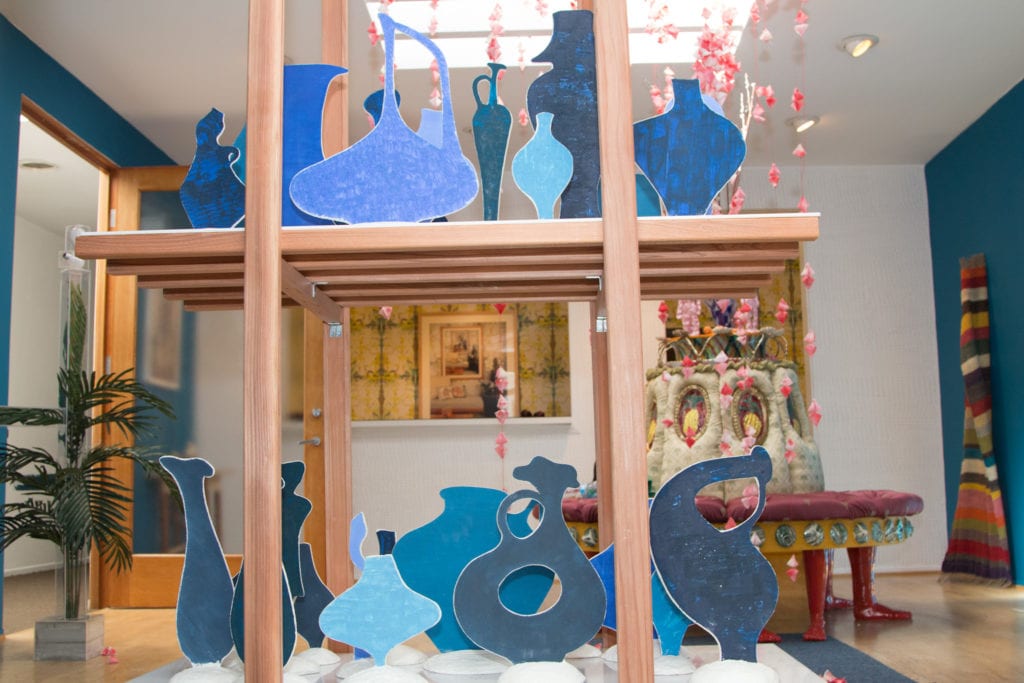
AZ: In your MFA thesis, you described that “polarity breaks down established expectations,” what do you mean by that?
KT: In my work, polarized structures are synergistic, and conventional logic is disrupted through inconsistency, multiplicity, and paradox. Each object in the exhibition is both disconnected and connected at the same time. Using my series “Sticks” as an example, each one of my sticks is incredibly delicate and can easily be shattered into bits. When installed together, they become bold and imposing, and can even appear threatening. Operating within variations of black, the installation oscillates between cool austerity and the warm invitation of the human touch.
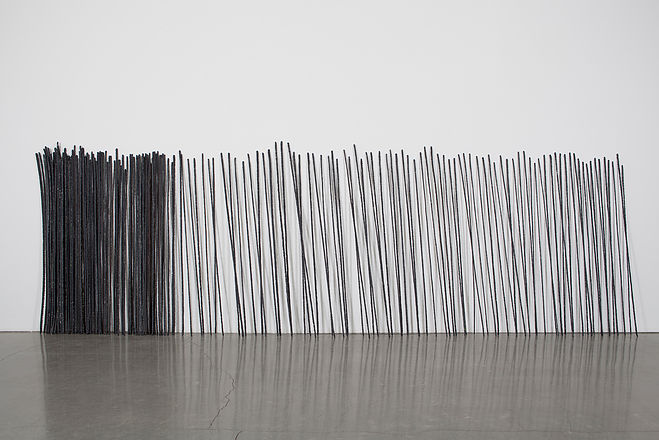
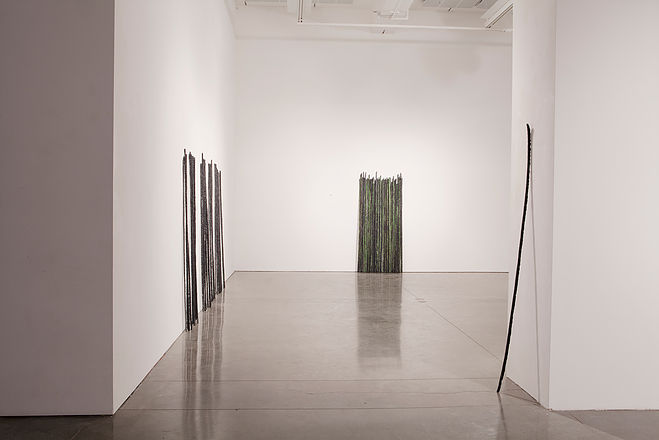
AZ: Your titles are somewhat removed, like “Cylinders,” “Sticks,” or “Numbers.” Yet the works are so emotive. How do you see the relationship between the titling and the work?
KT: That is something I still struggle with. The titles are objective because I want them to be inclusive – their openness allows for broader engagement with viewers. Sometimes I “arrive” at them, while other times it is what I begin with. I just know when it is right. I don’t think they are so removed though: does “Departed” seem empty or cold to you?
AZ: You’re right, it is indeed fitting. In terms of seriality and titling, your work shares obvious parallels with the Conceptual movement and Conceptual artists. How do you relate to them, when it is historically so very white and male? And do you place yourself and your work when it is inevitably compared? Are you trying to relate? To distance? What about other art historical movements?
KT: In some ways, I enjoy the work of the Conceptualists, but in many ways I do not relate. I cannot worry about others’ judgment or reading of the work too much because I can not control what is in their mind. Communication in form of textual language is limited – it is linear. Visual communication is not – it is presentational. The objects I make communicate in an “implicit manner.”
AZ: Can you talk a little more on that “implicitness”?
KT: Well, it’s very different from the Western form of communication. For example, growing up in a Chinese family, people tend not to say “we don’t support you” or “you need to be obedient,” but you and I both just know these expectations. We understand from their facial expressions, body language, tone, and their indirectness. They do not say it, but it is very clear if they do not accept you. My family does not understand my art nor why I am an artist.

AZ: Who, then, is your audience?
KT: I hope my audience is anyone interested in art.
AZ: How about plaster or resins? Why clay?
KT: Plaster is used in the ceramics process sometimes, and I like it for what it is, but I prefer clay for finished pieces. As for resin, I don’t like the smell of it. Clay is an integral component of my work. It’s malleable and plastic nature allows the direct connection from me to the objects I create.
AZ: It’s interesting that you went from the digital to clay, one of the oldest mediums of artistic expression. How did that come about?
KT: After high school, while working on my undergrad degree, I was not aware that I am an artist. I have worked in many fields, from illustration to graphic design, to animation, but was eventually bored. When I returned to school to find clarity of mind through studying art history, I found clay. It was then that I decided to work for my MFA.
AZ: Had you taken ceramics courses after you came back to college?
KT: No! It was completely unexpected. After completing my undergrad degree, I explored the field of ceramics until joining the UCLA graduate program in 2012.
AZ: How did you decide to pursue an MFA?
KT: When I returned to complete my undergrad degree, I wanted to study Eastern art history – possibly working towards a Ph.D in Eastern ceramic history. However, I found working with clay more rewarding.
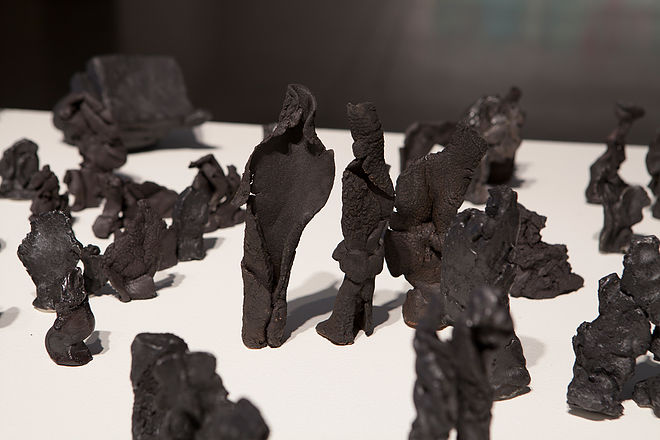
AZ: Could you tell us a little more about your childhood?
KT: I was born in Vietnam during the time when it was torn by war and unrest. With the end of the war, I became one of many Chinese-Vietnamese immigrants, expelled from our homeland awaiting asylum in Hong Kong displaced person camps. My family and I arrived in Los Angeles late 1980.
AZ: How has that experience informed your artistic practice?
KT: This unstable childhood has affected who I have become and manifested in every aspect of my life. Existing in a transitory state of cultures and languages has provided a platform for me to traverse between polarized principles. I strive to bridge the past and present, the land where I am from and where I now reside, and the two diverse cultures that are now embodied within me. I struggle to reconcile a multiplicity of cultures while also having the advantage of a flexibility of ideas. In my work, I see the development of an alternative vocabulary that acts as a space in which I can explore and articulate thoughts and experiences in a way that cannot be done through textual language. The work is a process of discovery and clarification of meaning. I am constructing new elements to add to my existing vocabulary.
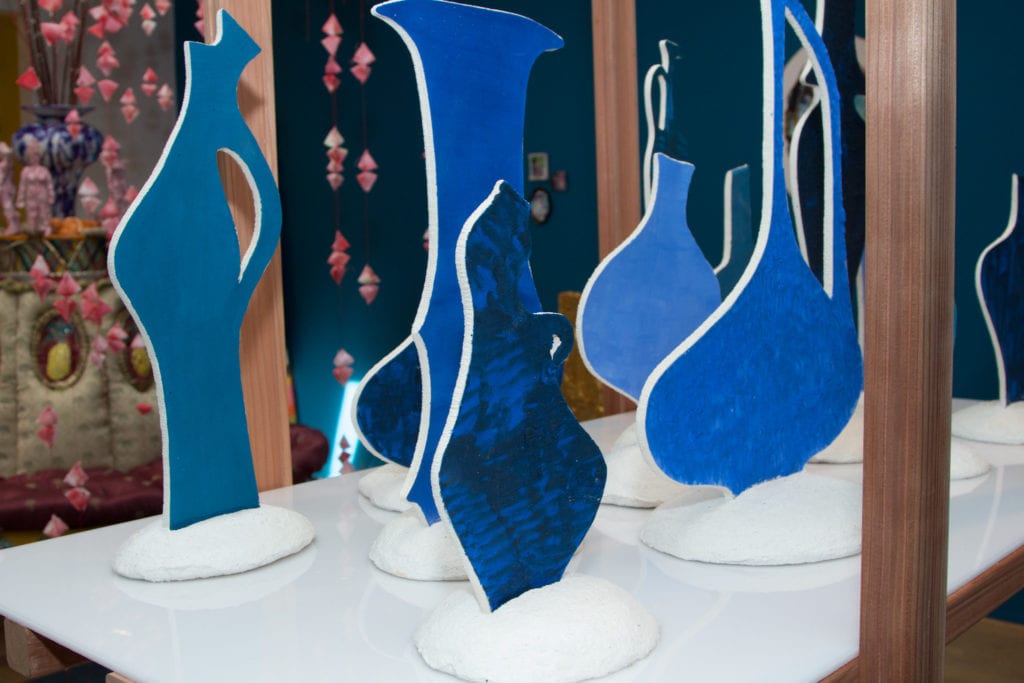
AZ: So what do you look to for inspiration, and what are you thinking about generally?
KT: I think about the conflicts in the world, resources, current events, economics, killing, homelessness, and people without choices. I also like to spend time in nature. I like to listen to birdsong and watch the leaves rustling in the trees. I enjoy caring for plants. Sometimes I think about all of these terrible things while in nature.
AZ: What do you like to read?
KT: Lately, I have been taking a break from reading and reflecting upon the last few years of my life.
AZ: Where ideally would your works be? A collection, museum, in public?
KT: I would like more people to have access my work so in public seems to be a logical choice.
AZ: What are you working on nowadays?
KT: I have been teaching at a local college. I am also exploring some new work. I enjoy teaching very much. Figuring out ways to provide a space for my students to explore the arts is a challenge because they come from diverse backgrounds and there is a wide range of age groups. They’re a funny group.
AZ: Ah, are they coming into the course thinking it would be easy because it is art?
KT: Yes. Many of them think it is an easy elective but ceramics is not so easy, They really have to work hard and learn to anticipate. I have two 30-year-olds who are doing a good job because they understand thinking ahead. One important thing in working with clay is timing. In the beginning, some of my students did not do adhere to my suggestions. They quickly learned the consequences and are doing much better now.
AZ: So where will we find you next?
KT: My work will be in a group show from October 21 to December 1 at Coastline Gallery in Newport Beach. I have not finalized the display. It is a faculty exhibition of various local colleges, and we are to represent the schools at which we teach.
